The 2,700 year old skeletal remains of an ancient yogi sitting in samadhi have been found in an Indus valley civilization archaeological site located at Balathal, Rajasthan.
Many Indus Valley seals depict pictures of yogis sitting in lotus position. Here are two examples showing ancient yogis sitting in meditation and keeping their hands on their knees as done in modern yoga meditations. If we see the skeletal remains of the yogi above, we can note that his fingers are in gyana mudra (with thumb touching index finger), resting on his knees as well.
Balathal is an archaeological site located in Vallabhnagar tehsil of Udaipur district of Rajasthan state in western India. This site, located 6 km from Vallabhnagar town and 42 km from Udaipur city, was discovered by V. N. Misra during a survey in 1962-63. Excavation began in 1994 jointly by the Department of Archaeology of the Deccan College Post-graduate and Research Institute, Pune and the Institute of Rajasthan Studies, Udaipur.
The following article provides some information on the archaeological excavations done at Balathal.
Piecing the Ahar Puzzle by Rohit Parihar
Excavation of sites from the 4,500 year old Ahar culture provide clues to the link between the Harappans and their predecessors.
That it existed at all was a surprise – a fortified enclosure of mud and brick, comparable to the citadels of the Harappans, spread over 500 sq m. It was filled with ash and cowdung. A people called the Ahars had built it in Balathal near modern Udaipur some 4,500 years ago.
Carbon dating established that they had lived in and around the Mewar region in Rajasthan between 3,500 and 1,800 B.C. They were Mewar’s first farmers, older even than the Harappans. But why had they built a fort only to fill it with ash and cowdung? To solve the mystery, a team of Indian archaeologists excavating the site went on removing layer after layer of civilisation.
The mystery deepened. They found five skeletons, four in layers between 2,000 B.C. and 1,800 B.C. That was the age of stone and copper, the chalcolithic age. This was the first time human skeletons had been found at any Ahar site. The Ahars, it had been thought, cremated their dead. And the Harappans buried theirs.
Who Were The Ahars?
There are 90 sites of Ahar – a rural society. The recent round of excavations is establishing that Ahar culture and Harappan civilisation were different though contemporary and related. This village life emerged much before the mature Harappan era.
Harappa’s progress in the mature Harappan period (2,500 B.C.) helped the rural Ahar people to flourish and develop their own township and stone and brick houses. On the scale of civilisation, they emerged far ahead of other chalcolithic cultures in the subcontinent.
And they may be the missing link to show how the Indus people made such a quantum leap from small rural communities to an advanced civilisation.
Ahar culture flourished predominantly in the Mewar region of Rajasthan, on the eastern side of the Aravallis, and in undulating rocky plateaus and plains along the Banas river and its tributaries.
In modern Rajasthan, Ahar sites have been reported in Udaipur, Chittorgarh, Dungarpur, Bhilwara, Rajsamand, Bundi, Tonk and Ajmer dotting10,000 sq km. “There is a commonality in all 90-sites located in South eastern Rajasthan and parts of Madhya Pradesh,” says Jaipur-based Rima Hooja, a scholar on Ahar culture.
Their name comes from a mid-1950s excavation led by R.C. Aggarwal, former director of archaeology, Rajasthan, at Ahar near Udaipur. A few years later, one excavation was carried out at Gilund in Rajsamand and then the focus shifted to the Harappans.
The Deccan College, Pune and Institute of Rajasthan Studies, Rajasthan Vidyapeeth, Udaipur turned their attention to Ahar culture in 1994 and began excavations in Balathal. Deccan College and the University of Pennsylvania began digging in Gilund in 1999 and the Jaipur circle of Archaeological Survey of India (ASI) began excavation at Ojiyana in Bhilwara in 2000. And discoveries began pouring in.
Gwen Robbins, a biological anthropologist from the University of Oregon, USA, in her ongoing preliminary analysis of the bones, found the first skeleton uncovered was of a male. Dead at the age of 50, he suffered from a joint disease and had lost all but four of his teeth at least five years before death. On closer inspection of the remains, a left mandible and a few cranial fragments were found to be of a second individual aged 35 whose sex couldn’t be determined.
The third skeleton was of a female approximately 35 years of age.The fourth was of a 35-year-old woman, and it caught the archaeologists’ interest. It had been buried with a small earthen lota (pot) near the head. Why was the lota there? “I am certain that the fortified enclosure had a ritual function,” says Dr V.N. Mishra, former principal of the Deccan College, who led the excavations: “You don’t find such selective burials in cow dung and ash anywhere else.”
The fifth skeleton, from a different era, was of an adult male 35 to 40 years old, and had been buried in a seated position that resembles the modern samadhi burial of sadhus who renounce the world. The ritual of burial in ash and cowdung raises the need to look at related traditions in present-day Hindu communities such as Gosain and Jogi which bury their dead.
Were They Cow Worshippers?
The excavations reveal a large number of bull figurines indicating the Ahar people worshipped the bull. At Marmi, a site near Chittorgarh, these figures have been found in abundance indicating it could be a regional shrine of the bull cult of this rural population. Discovery of cow-like figurines in Ojiyana, the first site found on the slope of a hill, has baffled archaeologists.
Cow-worship was not a known Ahar practice. “There are no humps and we can see small teats,” B.R. Meena, superintendent, asi Jaipur circle, who undertook the excavation, says, “These are certainly cows.” Other archaeologists suspect them to be bull calves but insist if further studies prove these to be cows, one could infer that the cow was a revered animal and the Hindu practice of treating the cow as a holy animal can thus be of pre-Aryan antiquity.
There is no other evidence of idol worship or Harappan religious practices like worship of the mother goddess. The Harappans flourished in a far larger area, along the alluvial plains of the Indus and its tributaries, by the Saraswati, in Baluchistan and in the relatively semi-arid environment of
Kutch and Saurashtra and the sandy south-western plains of Gujarat. But there is evidence that the Ahar people may have had links with Gujarat’s Harappans.
Did The Harappans Learn From Them?
The technique of decoration in pottery known as “reserved slip” which was seen only in a few shards at the Harappan sites of Mohenjodaro and Surkotada in 2,400B.C. is a very common feature at Balathal.
This technique consists of putting a second slip over the earlier (lower) slip on the pot and then removing it in thin bands before it completely dries up. This produces various kinds of motifs like straight and wavy bands and criss-cross patterns in two colours. Says V.S. Shinde of Deccan College: “The Harappans apparently borrowed this technique from Balathal.”
Speculation about intense fire-modelling activity has been supported by the discovery of kilns at Ahar sites. The coarse pottery in the earliest levels of excavations confirms that Ahar culture grew independently of Harappans. In later levels, fine deluxe ware of three varieties was found.
Decorated black-and-red pottery is a mark of Ahar culture distinct from the Harappan where the interiors of vessels was black. In Balathal, the black-and-red ware constitute only 8 per cent of the ceramic assemblage whereas in Ahar it is 70 per cent.
Balathal apparently imported this ware from other Ahar sites. Tan ware, mainly dishes and dishes-on-stand very similar to those of the Harappans, and thin red ware appear only in the “fortification phase” of Ahar civilisation and suggest contact with the Harappans of Gujarat.
An unusual discovery last year was a set of six clay pots arranged inside a large clay jar in Balathal. Of the six pots three are large black-and-red bowls decorated with geometric designs in white. One of the other vessels contained steatite beads and flowers both of which were used for stringing into necklaces. “This, to me, is a lady’s jewellery box,” says Mishra.
Unlike other chalcolithic cultures which had stone tools, the Aharites made copper tools such as chisels, razors and barbed and tanged arrow heads, apparently for hunting. Probably, they had the advantage of access to copper from the Khetri mines and in the nearby Aravalli hills. There is evidence of copper melting too. Harappans probably imported copper ores and even finished copper goods from Ahar people.
Were They The First Planners?
If Balathal surprised archaeologists with its skeletons, Gilund has excited them with its massive burnt-brick structures. A sand, clay and lime mix was used as plaster. Even Balathal and Ojiyana had sun-dried mud-brick and stone structures and fortifications. The findings club Ahar sites in the same category as the Harappans who were, until now, the only known pre-iron people known to have used these techniques.
In stone structures, mud bricks were often used to raise partition walls. In Balathal, the 2,500 B.C. fortification phase reveals a succession of stone structures inside the fortification and below the wall that ran around the residential complex.
There are high-built stone platforms on the eastern edge. This implies that people knew of stone architecture when the settlement began around 3,500 B.C. though fortification began later. Wooden beams and rafters made the roof, capped by mud in case of stone walls and by thatch in case of smaller structures of wooden posts and mud walls.
Mud and cow dung were used as plaster – as villagers use them even today. Locally available granite and gneiss rock were used in construction and the average size of stone blocks was 25 cm long, 20 cm wide and 15 cm thick.
The mud bricks were often of the same length but narrow and slimmer. As the copper tools were too small for quarrying, people apparently heated rocks with fire to create cracks and poured water to loosen the stones, using stone hammers and copper and wooden wedges to remove the stone blocks.
The Balathal and Gilund settlements also show incipient planning with a wide street and a narrow lane dividing the residential complexes. At Balathal, there are remains of a wall that probably surrounded the residential complex and a fortified structure in the centre of the habitation.
Like Harappan citadels, it is built over mud-brick platforms, and fortification walls are broadened towards the base. Gilund had long and wide parallel walls. Shinde who began excavations at the site with a University of Pennsylvania team says, “Gilund is emerging as an urban centre of the Aharites.” One complex is of 8,000 sq ft, and there are more like it around.
Apparently, it was controlling the settlements around it with its own organisational set-up of a chiefdom-based society but the construction activity was influenced by Harappa. Says Shinde: “The Harappans did help them flourish but the farmers retained their culture intact.” Chairman of the Archaeological Society of India S.P. Gupta says, “The Harappan model of city planning has a clear impact here.”
It was a mixed economy based on farming, stock raising, hunting, fowling and fishing. There was sufficient agricultural surplus to undertake fortifications as in Balathal. P.K. Thomas and P.P. Joglekar of Deccan College studied animal remains and found domesticated animals accounted for 73 per cent of bones, sheep and goat 19 per cent, buffalo only 3 per cent.
Wild animals such as nilgai and blackbuck constituted 5 per cent. Remains of pig, fish, turtle and molluscs were also found. A large number of bones were charred and split open, perhaps to extract arrows. M.D. Kajale of the same college found that the cultivated plants included wheat, barley, lentil, common pea,finger millet and Italian millet.
Hooja points out that at Ahar, rice was also grown. The rotis were made, as they are today, on earthen tawas, food cooked on U-shaped chulhas, and lentils and cereals grounded in pounders and querns – handmills of stone.
What Happened To Them?
Aharites abandoned the sites in 1,800 B.C., a period by when Harappa had also declined. Apparently, it was climatic changes or natural calamities that compelled Aharites to quit farming which might not have remained remunerative in that area. Their economies must have been hit by the decline of Harappa too. So either they left for other places for farming or took to cattle and stock raising.
Balathal, for example, remained unoccupied until 300 B.C., when in the Mauryan era, some people re-occupied the sites. Lalti Pandey of the Institute of Rajasthan Studies says of these people that “they knew of iron smelting and manufactured iron implements”. Two iron smelting furnaces have been found in Balathal in this phase. It is around this period’s layer that the fifth skeleton was found.
In Mewar, there is a long and continuous history of human habitation. It seems that influenced by Ahar culture, hunter-gatherer-herders of the region took to farming and became the forerunners of today’s rural society in southern Rajasthan.
Mishra says others took to stock breeding and became Gadris (shepherds)and Rabaris (camel breeders). Then there are communities like the Gemetis, Meghwals and Bawarias who continue to practise their traditional occupation of hunters to this day. Some of them used to eat carrion until a few decades ago.
The odhnis of Gameti women bear a tell-tale resemblance to the trademark red-and-black pottery of Ahar culture. And evidence of the folk religion of the Ahars survives among the Kalbelias, the community to which the dancer Gulabo, famed in Rajasthani folklore, belonged. The Ahars aren’t dead. They still live among us.

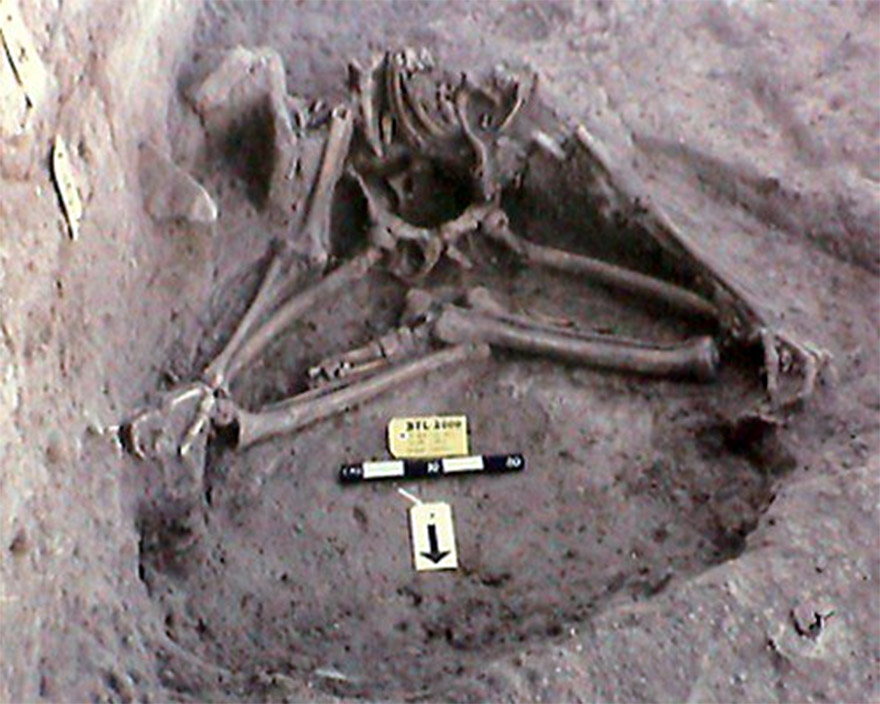
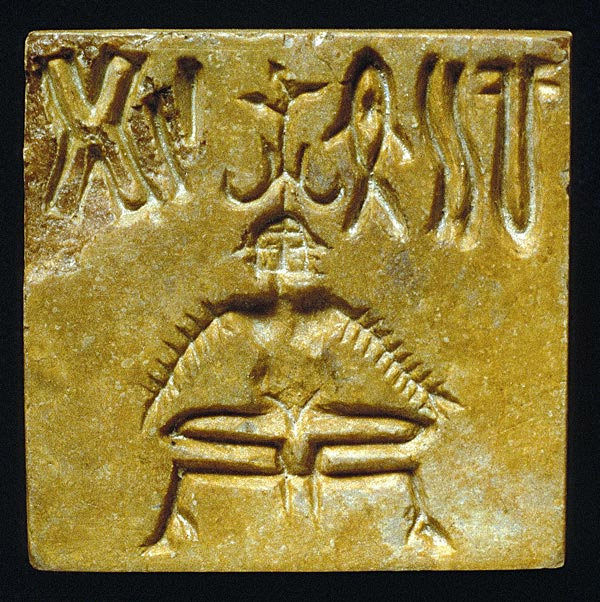
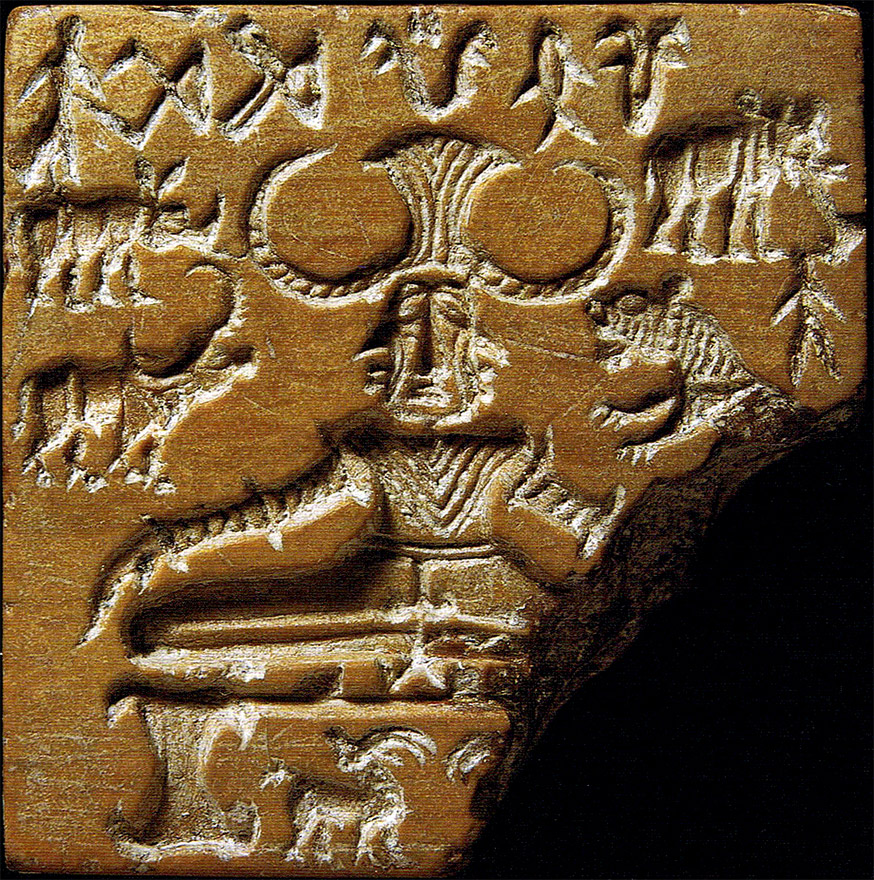
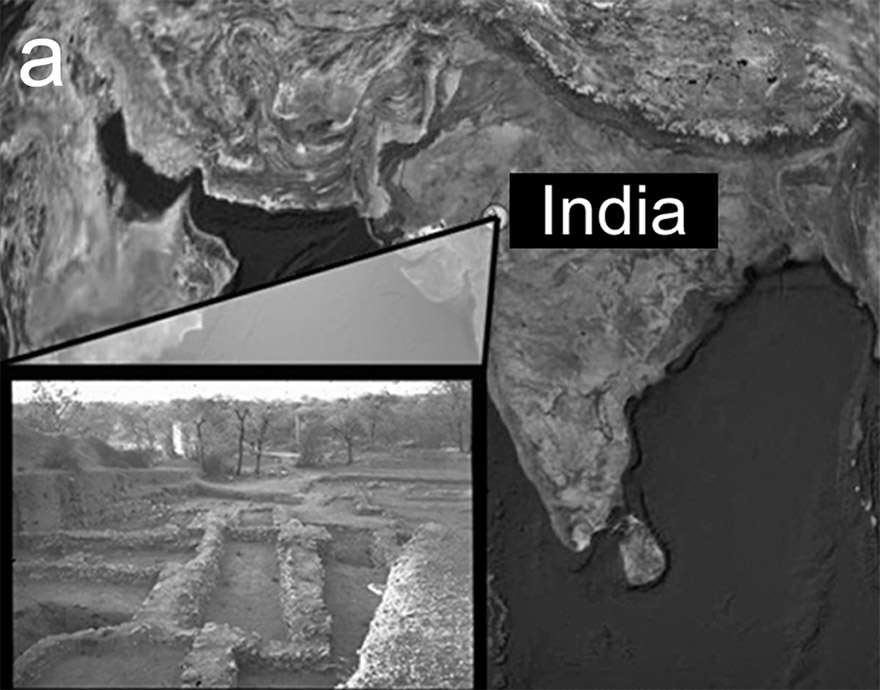
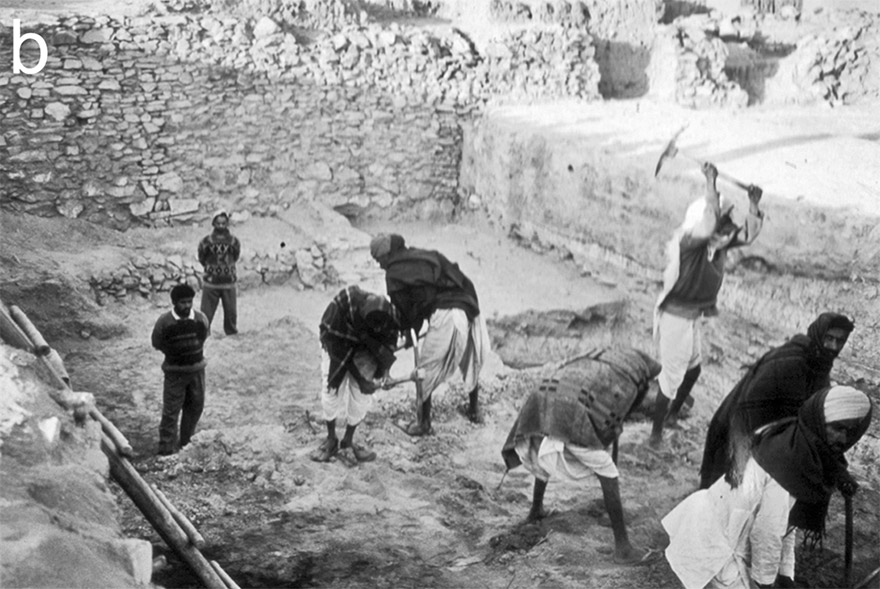


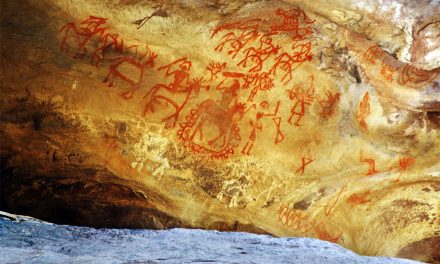









Dear Sir
GOOD DAY
GOOD
A great article on people that lived before 2000 BC. If only we could reconstruct the history of these people and how they lived and their social infrastructure, it would be even more exciting. Thank you for this excellent article about the Indus Valley civilization.
Excellent educational articles. There are so much to know about our ancient civilizations.
very valuable informations.
Useful inputs by divine org.
While I like this article, I feel many things are left out:
1) It is disrespectful to those in samadhi to get excavated. Normal practice is to build s temple for their attempt to know the bhagwan and seek true knowledge through samadhi by inner journey of soul.
2) There are many sadhus who do this once their purpose is served, and do not want to be disturbed afterwards even today.
3) This is beyond comprehension of today’s human like us who are possessed by layers of ignorance & fear of death in general would not consider this normal because they are practical (a relevant term) – wanting nothing more than their own sense object gratification and success. Not brave enough nor have balls to renounce all and pursue samadhi marg as one of the 8 fold yogic path.
3) Just because 5 elements of the body has faded in samadhi doesn’t mean their astral form seized to exist or stopped being in samadhi.
4)When you disturb them they still may be in samadhi travelling somewhere in cosmos and communicating with Dieties in realm unknown to us.
4) It was only through intense samadhi and penance that which Rishis have uncovered the secret laws of nature aka universe and revealed the real Deities, bhagwaan and their true form for man kind and to us to worship else who would in their materialistic mind could ever get this ahead.
Most (vatican and saudis) are attempting to promote their false idea about religion by manipulation, power and money to brainwash the residence of the world and unfortunately weak one falls in their trap. Other their messengers were nothing more than sadhu alike yet they have turned them into Gods.
5) Foreigners British (Christians), Buddhist followers and Mughals (Muslims) when invaded India, they burned, stole, and copied from knowledge discovered by those in penance, our Rishis who wrote our ancient scriptures among Vedas and Bhagavat who realized certain truth after penance in this form of samadhi. In process they slaughtered, raped and tortured Millions of Hindus worst than genocide of mankind yet we have no clue. Most people don’t realize this as they are interested in tamsik component of their existence!
In spite all we still respect all faith and religion it is not reciprocated by them. While, we see whole world as one family they don’t, we welcomed them in India in past, they don’t. Well, maybe it is the nature of this yuga where true dharma righteousness suffers and evil appears pleasing and wise! What a conundrum! Yet they see us as less developed nation in the world!
Well, why don’t you return all the riches and treasures you stole from us then!
Very interest article. Hope this will give further clues of Hindu civilization.
Dato Dr Krishna Moorthy Appalanaidu
Malaysia
Great articles, they are amazing. People lived before 2000 years ago.
Excellent.
I like too much. with warm regards.
I find a crystal shivlinga shape and one more clear linga image on it,naturally om written on it.
Kindly tell me the value,means,spirituality of it.
How can I send you images of that?
So that you clearly elaborate.
Very Interesting and informative Article. Regarding source of Copper used by Balathal people there are nuber of copper deposits known around 20-30km redius of vallabhnagar which has been mined in ancient times as evidenced from presence of ancient mine workings and heaps of mined out debris slag.
exciellent article use full information on civilization
Great History Great Research
Useful information.
Needy information for all Hindus and others to follow Hinduism.Defend ourselves.
Holy information about our ancient past,
also like a Comment Given Titled as “You know it says”, on March 26, 2016 at 2:09 pm
Agreed with his suggestion to not disturbing the Penance Souls in samadhi’s because once they, Completes their moto they get returns to the world for public welfare meanwhile we should respect their penance.
Excellent info really great to hear that people used to worship cow in those times obviously we are based on history itself dat shows since BC we r worshipping cows really great site and I appreciate the team behind this.Jai shri ram
The excavations at Balathal and Bhilvara has revealed interesting information about the burial in cow dung ash.The ‘agnihotra’ and ‘ahitagni’ class of priests have the privilege of cremating (or burying,according to the traditions followed) in the cow dung fuel balls, dried and maintained by them. Ahitagni is the priest who consecrates sacred fire in altars and maintains fire by refueling them. Agnihotra is the person who offers milk, (milked by agnihotri cow) both in the morning and evening to deities Surya and Prajapati. The milk is heated in garhapatya fire in a sthali (also called lota, a brimless container, made by a brahmin) and offered in the fire -Agni, that he maintains all through his life. The fuel for this is made from cow dung, that is cleaned of dry grass if any, kneaded , made into balls as they retain heat and dried to be used as refueling every night.
These priests have the privilege of their body post their death, using the fire that they have maintained all through their life. The agnihotra sthali,which is made by a priest, the havani or the ladles used by him and all the other vessels used by him for rituals are buried or placed around the dead body. The body of these priests are initially laid in a vedi on sacred grass with sacred fire altars around. On the place where they are buried or cremated , a mound is constructed with a stone slab on top to save from the digging of carnivorous animals and also for demarcation so that people do not step on this. The agnihotra priests, even to this day maintain these rules meticulously.
This yogi lived approximately 800 years after the advent of Lord Krsna. One would imagine the society at that time was strongly influenced by Lord Krsna and His Mahabharata.
The practice of yoga was prevalaint in Harappa civilization , it is a confirmed fact .
Excellent piece of information and individuak comments on it.If there is any tool to measure presence of positive energy at the site of excavation which is generally said to be present in the form of aura in environment and help others to enter in samadhi very easily also called siddhapeeth .Scientists need to work on such tools which proves the real nature of siddhapeeth scientifically.
What a great article. Wonderful.
Om
Really wonderful article…civilised Mankind was on earth 5000 years back…In the Dhasaavathara of Lord Vishnu there is Budha who lived in 500 BC (?)
If it is Historical why not Ramavathaara and Krishnaavathaara…?
Amazing article,Great knowledge.
Great site and full of knowledge.
Dear Loving Sir
Good day
Today’s brought the subjects are found good
Really nice, very educating
Clearly provides a brief account on the Aharian culture and its independant existence from harappan culture, still colored with the contemporary harappan culture at some point which could be possible due to the relations with the Gujrat harappa settlement (as mentioned) . Reading this, one can identify Aharian culture.
Looking forward to futher research articles..
Hari om
excellent,pranams..jk
Because of the ashes and cow dung, people may be interested in Rudolf Steiner’s agricultural Preparation. (471?) he says because cow horns are antennae conduct cosmic rays of planets and other celestial bodies, cow dung has special properties. Horns are filled with dung and buried in the fall and unearthed in the spring. The ashes inside are stirred int barrels of rainwater this way and that, and the water is applied to gardens. I did this and my garden immediately attracted bees, toads, frogs etc to create a thriving community of a garden. Plants flourished.
There may be some similar technology at work at this site.
Just a thought.
A truly revealing article. But, is our Educational System takes cognizance of these findings? Are we to read, still with the same old history which the English who ruled us made us read. When will our school curriculam be made to include these excavations done with so much difficulty at the expense of lot of time and huge public/private funding. Is our Government serious to make such numerous archeological findings exposed. Or, are we still going to grope with the same old lies like the so called Aryan invasion into India despite numerous articles, findings and papers against such lies, probagated by Europeans to serve their own purpose of divide and rule?
Interesting article, but filled full of every mythology passed off as history by the western “scholars”.
India, arise and claim your heritage!
No research of Harappa civilization is complete without including the the Dravidians and their language. Ahar are the Ayars who migrated to South India immediately after the collapse of Indus valley civilization. The name Ayar means Cow people. They are the Ydadava clan of Tamilnadu. In Tamil “Aa” means cow. The Sangam literature speaks a lot about Ayars, Meenavar (Meenas) and Villavar (Bhils).
Great…